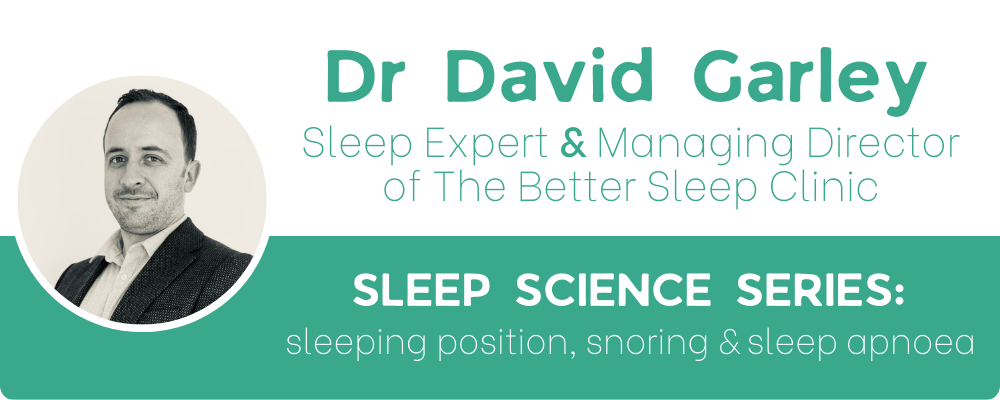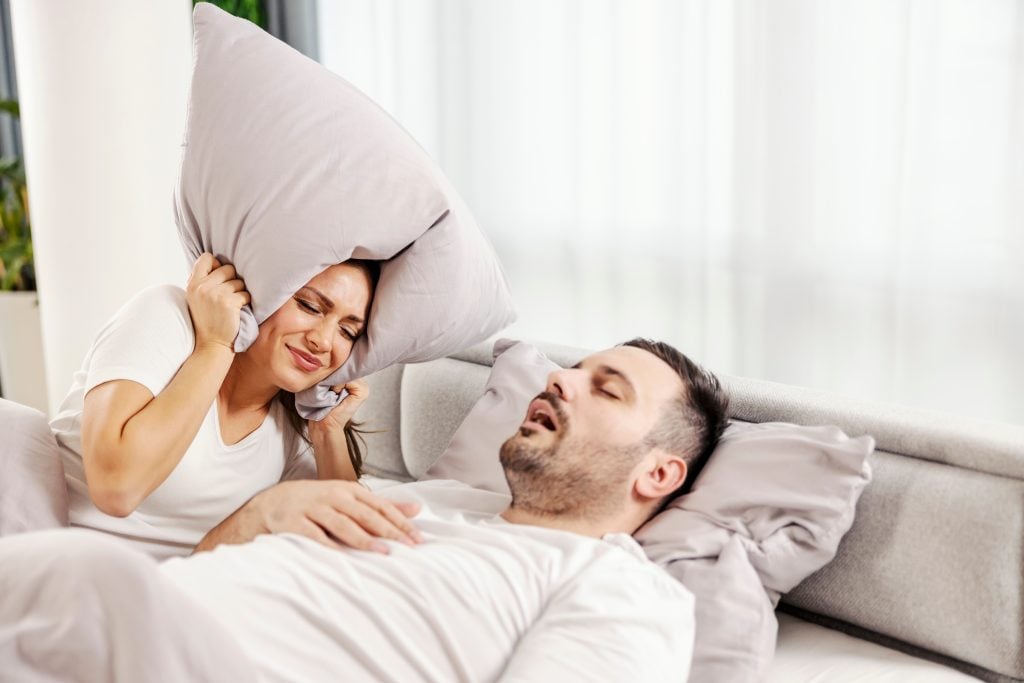
Snoring and obstructive sleep apnoea are related conditions on either end of a vast spectrum. On one end, you have mild, piglet-esque snores that cause mild irritation at worst and are associated with no health issues whatsoever. This snoring can progress into a more robust machinery clatter, through to an apocalyptic thunder that frequently results in couples sleeping in separate bedrooms. Whilst on this severe end of the snoring spectrum is the related condition, obstructive sleep apnoea, which seriously affects physical and mental health.
Your upper airway is made of either hard structures, like the hard palate in the roof of the mouth, or soft structures, like the back of the throat and the base of the tongue. Hard structures stay in place by themselves, but muscles hold soft structures in place. When you fall asleep, these muscles relax, which causes the airway to narrow in on itself slightly. This causes the airflow to become turbulent, causing the soft structures to vibrate, which makes the snoring sound.
In the related condition OSA, the airway narrows further until it closes. This causes the breathing to pause until your body gets so concerned that it wakes you up so your airway muscles regain their tone and open your airway so you can start breathing again. A loud snort or a gasp often occurs as a result of this process.

The key difference between the two is whether you stop breathing as you sleep. This might be something that your bed partner notices, but if you sleep alone, this can be more difficult to tell. OSA often results in poor quality sleep, so if you wake feeling unrefreshed and are sleepy during the day, this is another tell-tale sign that your snoring may be a more complex matter.
The definitive way to tell the difference is to have a home sleep test. These watch-like devices you wear overnight and take detailed measurements such as oxygen levels, breathing patterns, snoring volume and body position whilst you sleep.
Why some people snore and have OSA when others don’t is down to the size of your airway – a lot of which is due to the shape of the anatomy you’re born with. However, anything that might cause your airway to narrow is a risk factor. These factors include being overweight (as the extra weight in your neck presses in on your airway), having large tonsils, a slightly swollen or inflamed airway (which may occur as a result of hayfever or smoking), and anything that causes your airway muscles to be extra relaxed, such as alcohol or sedating medications.
Often, people only snore or offset OSA when lying on their backs. Anyone who shares a bed with a snorer will likely be familiar with this fact (and have probably spent many a frustrated night elbowing their bed partner until they sleep on their side). This is because your throat anatomy becomes narrower when you lie on your back, with the weight of the tongue pressing back into the airway and narrowing it.

While simple snoring has no health impacts for the snorer, it can seriously affect your bed partner’s sleep quality and quantity. This can lead to separate bedrooms being used, which itself can cause significant relationship strain. OSA causes similar effects in a bed partner but also seriously affects the health of the individual with the condition. OSA is associated with a significantly increased risk of heart disease, diabetes and depression. There is also a significantly increased risk of accidents in the workplace and on the road.
With the conditions having a common cause, there is a cross-over of treatments. Making adjustments to your lifestyle, such as losing weight, stopping smoking and reducing alcohol intake, can all help.
Dental devices, which look like sports gumshields but with a section for the lower teeth, can reposition the jaw slightly forward as you sleep and create more space behind the tongue. This can be effective for snoring and mild OSA.
The gold standard treatment for OSA is called CPAP, which stands for continuous positive airway pressure. A machine gently blows air at low pressure, holding your airway open from the inside and preventing it from narrowing. This gold standard treatment is mainly aimed at OSA rather than simple snoring.

For snoring and OSA that occurs exclusively when you sleep on your back, it is effective to look at ways to train yourself to sleep on your side.
Some people try sewing a tennis ball into the back of their pyjamas to make it less comfortable to sleep on their back and encourage more side sleeping. There are also more high-tech versions, such as devices that attach via a chest strap and sound an alarm whenever you roll onto your back.
Suppose you only have positional snoring or OSA when you sleep on your back. In that case, choosing a mattress that facilitates side sleeping is sensible, such as a soft or medium tension mattress that supports your shoulders and hips, ideally pocket-sprung or memory foam. Triangular-shaped pillows can help maintain this sleeping position overnight.
There are effective treatments for snoring and OSA, so don’t let these conditions affect your (and your bed partner’s) sleep. If you’d like to book a consultation, visit www.thebettersleepclinic.co.uk or www.theinsomniacentre.co.uk.
